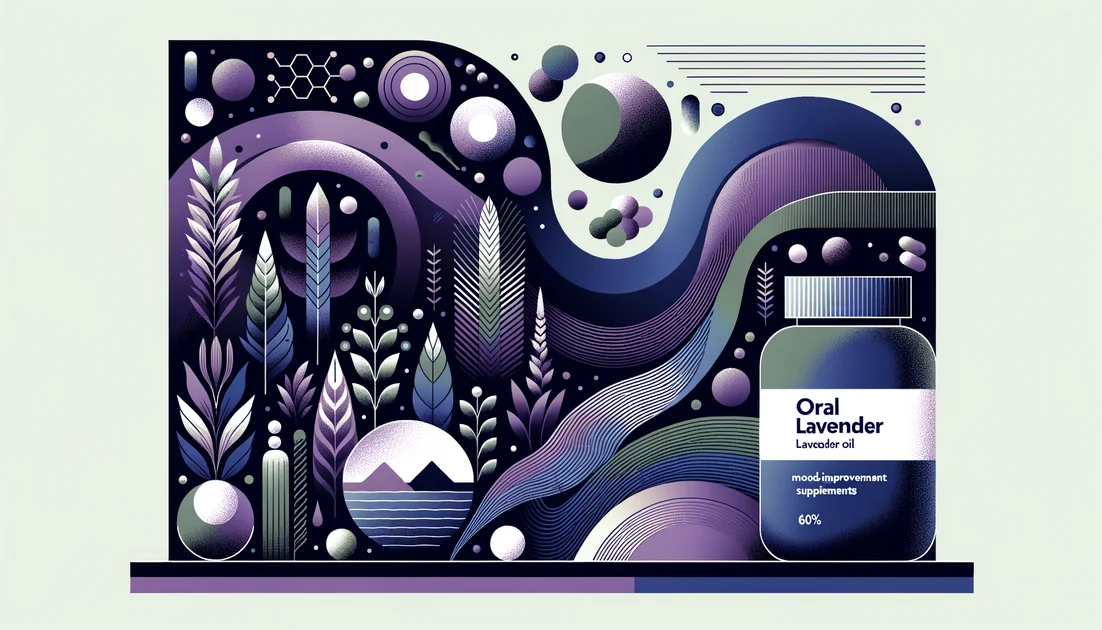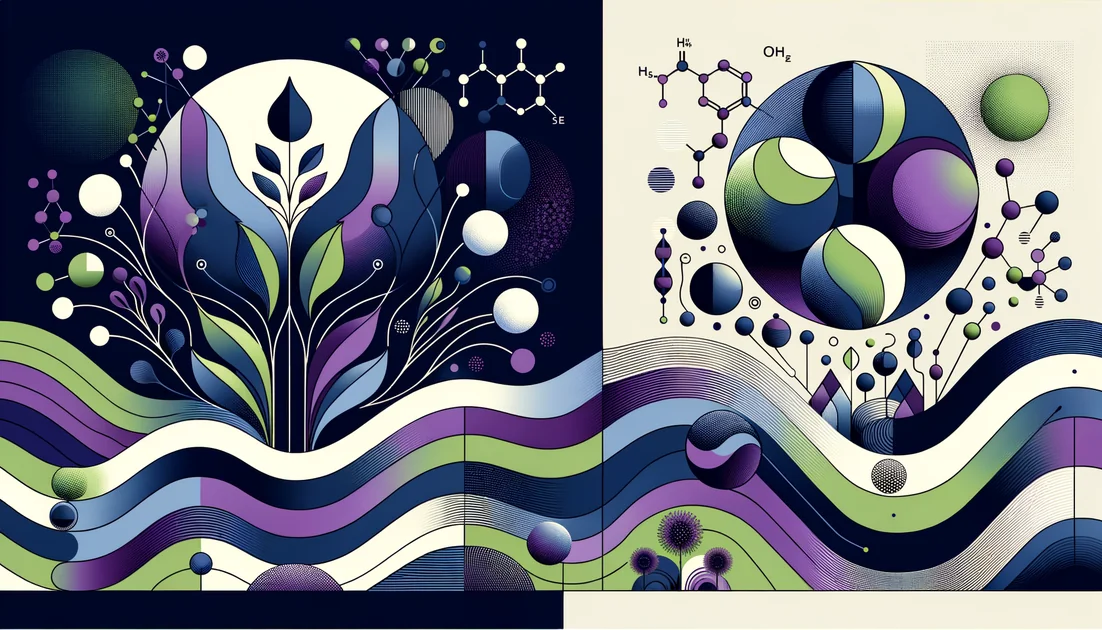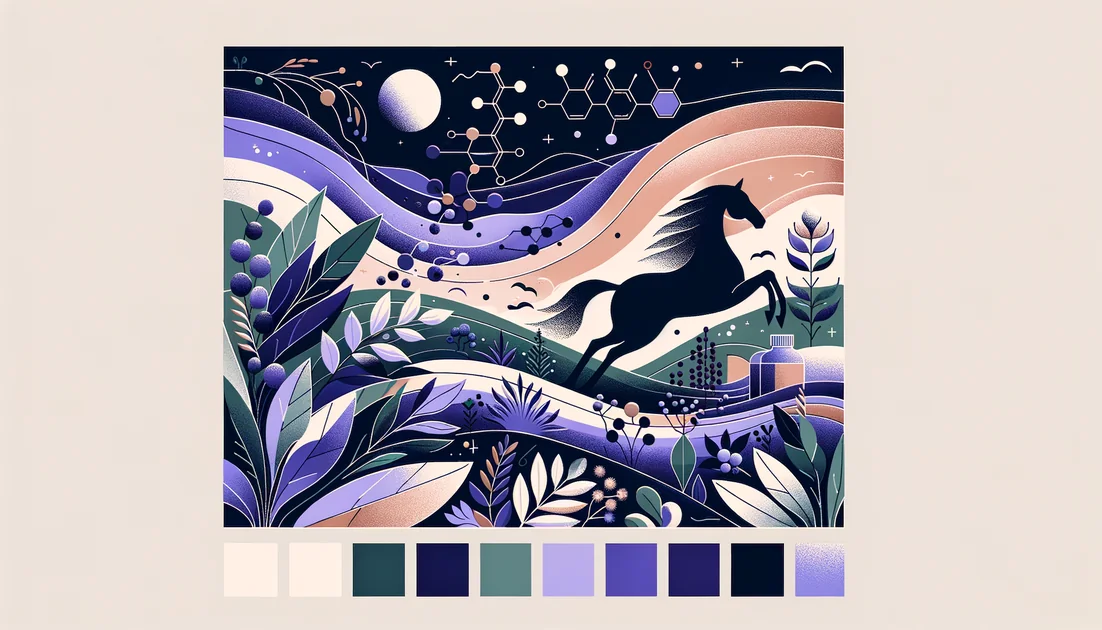
Top 10 Evidence-Based Recommendations
We reviewed and cross-checked 60+ randomized human trials and meta-analyses, prioritizing effect size, safety, and practicality. No affiliate fluff—just what actually moved depression/anxiety scales in people, with doses you can copy from the trials.
Quick Reference Card
Magnesium glycinate/citrate 200–400 mg nightly – fast relief in 1–2 weeks [6][7]
Saffron extract 28–30 mg/day – SSRI-like in mild cases [11][14]
L-theanine 200–400 mg – rapid calm without sedation [9]
Ashwagandha 300–600 mg/day – lowers stress/cortisol [15][16]
Ranked Recommendations
#1Silexan (oral lavender oil)Top Choice
The calm-in-a-capsule that rivaled an SSRI for GAD
Dose: 80–160 mg once daily
Time to Effect: 2–4 weeks (10-week trials)
How It Works
Evidence
Worry/restlessness, daytime anxiety with light low mood
Burping/lavender aftertaste; rare GI upset. Avoid with strong sedatives until you know your response.
#2Omega-3s (EPA-dominant)Strong Alternative
When depression has an inflammatory flavor
Dose: 1,000 mg/day total omega-3 with ≥60% EPA (or pure EPA 1 g/day)
Time to Effect: 4–8 weeks
How It Works
Evidence
Low mood with fatigue/inflammation (e.g., high CRP, omega-3–poor diet)
Fishy reflux; bleeding risk is minimal at 1 g/day but caution with anticoagulants.
Check label: EPA should be ≥60% of total omega-3 per capsule. Take with meals to improve absorption.[3]
#3Magnesium (glycinate or citrate)Worth Considering
The underappreciated fast-acting mood mineral
Dose: 200–400 mg elemental magnesium nightly (start ~200 mg)
Time to Effect: 1–2 weeks
How It Works
Evidence
Tension, poor sleep, PMS-exacerbated mood
Loose stools with oxide; reduce dose if diarrhea.
Pick glycinate or citrate—not oxide—for better absorption and fewer GI issues.[6]
#4Saffron extract (Crocus sativus; crocin-rich)
A spice that matched antidepressants in small trials
Dose: 28–30 mg/day standardized extract (often 14–15 mg twice daily)
Time to Effect: 4–8 weeks
How It Works
Evidence
Low mood with stress/anxiety and poor sleep
Rare nausea/headache; verify pregnancy safety with clinician.
Look for patented, standardized extracts (e.g., Affron/Satiereal) delivering 28–30 mg/day of crocins.[11]
#5L-theanine
Calm without sedation
Dose: 200–400 mg, once or twice daily
Time to Effect: 30–60 minutes for acute calm; 2–4 weeks for full effect
How It Works
Increases alpha brain waves and supports GABA, dopamine, and serotonin—promoting a relaxed yet alert state.[9]
Evidence
Systematic review of RCTs suggests 200–400 mg/day reduces stress/anxiety in stressful conditions; low risk and helpful as an add-on for anxious depression.[9]
Anxiety with racing thoughts; situational stress
May potentiate sedatives; rare headache.
Use 200 mg 30–60 min before stressors or bedtime; stack with magnesium at night.
#6Ashwagandha (Withania somnifera, root extract)
Adaptogen that lowers stress hormones and worry
Dose: 300–600 mg/day root extract (e.g., KSM-66 or equivalent)
Time to Effect: 2–8 weeks
How It Works
Evidence
Anxious stress, sleep-onset issues
GI upset; avoid in hyperthyroidism or with sedatives without supervision.
Choose root-only extracts standardized to withanolides; 300 mg twice daily is common in trials.
#7Probiotics (psychobiotics)
Treat your gut; your mood often follows
Dose: 10–20 billion CFU/day multi-strain for 4–8 weeks
Time to Effect: 4–8 weeks
How It Works
Gut–brain axis: microbial metabolites (SCFAs), vagal signaling, tryptophan–serotonin pathway, and cytokine modulation reduce neuroinflammation.[17]
Evidence
2025 meta-analysis (n≈3179) finds small but significant reductions in depression and anxiety, with greater benefit in mild symptoms.[17]
Bloating + low mood; stress-related GI issues
Temporary gas/changes in stool.
Look for strains with psychiatric data (e.g., L. helveticus R0052 + B. longum R0175) and give it 8 weeks.
#8SAMe (S-adenosyl-L-methionine)
Methylation support with antidepressant-level punch
Dose: 800–1600 mg/day divided
Time to Effect: 2–4 weeks
How It Works
Evidence
Low mood with partial SSRI response or methylation issues
Nausea; theoretical bipolar switch—avoid in bipolar without supervision.
Use stabilized forms (tosylate disulfate). Take with food; add B-complex if homocysteine rises.
#9Curcumin (with bioenhancer)
Anti-inflammatory lift for low mood
Dose: 500–1000 mg/day curcumin with piperine or enhanced forms (e.g., BCM-95, Theracurmin)
Time to Effect: 4–8 weeks
How It Works
Evidence
Depression with pain/inflammation or metabolic issues
GERD/GERD-like discomfort; interacts with anticoagulants at high doses.
Combine with piperine (5–10 mg) or choose enhanced-bioavailability curcumin; take with meals.
#10Rhodiola rosea
Stamina + mood for stress-related lows
Dose: 200–400 mg/day standardized to rosavins/salidroside
Time to Effect: 1–4 weeks
How It Works
Modulates monoamines and HPA stress response; may reduce fatigue and improve resilience.[12]
Evidence
RCTs suggest benefit in mild–moderate depression and as add-on to sertraline; more data needed but promising with low side effects.[12]
Low motivation, fatigue-heavy mood, stress
Can be stimulating—avoid late evening.
Start low (200 mg AM) and titrate; pair with magnesium at night for balance.
Common Questions
What's the fastest supplement for mood?
For anxious low mood: L-theanine (30–60 min) and magnesium (1–2 weeks). For steady anxiety relief: Silexan in ~2–4 weeks. [6][7][9][1]
Which omega-3 should I buy for depression?
Choose EPA-dominant or pure EPA totaling ~1 g/day; DHA-heavy formulas didn't show the same benefit. [3]
Can I take these with an SSRI?
Commonly combined: omega-3, magnesium, L-theanine, saffron, probiotics, curcumin; coordinate SAMe/folate with your prescriber. Avoid 5-HTP and St. John's wort with SSRIs. [27][28][31]
How long should I try a supplement before judging it?
Give most 6–8 weeks (magnesium may help in 1–2 weeks; theanine works acutely). Reassess with a symptom scale (PHQ-9, GAD-7). [6][9]
Any labs worth checking?
Consider vitamin D, B12/folate, ferritin, hs-CRP, and omega-3 index—correcting deficiencies amplifies results. (General guidance; not trial-specific.)
Timeline Expectations
Combination Strategies
Calm Days, Better Nights
Components:Silexan 80 mg AM + Magnesium glycinate 200–300 mg 1–2 hrs pre-bed + L-theanine 200 mg late afternoon or pre-bed
Targets glutamate/GABA (Silexan), NMDA/GABA (magnesium), and alpha-wave calming (L-theanine) for daytime anxiety and smoother sleep—mechanisms are complementary with low interaction risk.[1][6][9]
Start Day 1. If anxiety persists after 2 weeks, increase Silexan to 160 mg/day.
Anti-Inflammatory Mood Lift
Components:EPA-dominant omega-3, 1 g/day + Curcumin 500–1000 mg with piperine + Probiotic multi-strain 10–20B CFU
Dampens neuroinflammation (EPA/curcumin) and stabilizes gut–brain signaling (probiotics) for depression with fatigue/inflammation.[3][17][23]
Take omega-3 and curcumin with meals; probiotic daily for 8 weeks before judging.
SSRI Helper (talk to your clinician)
Components:SAMe 400 mg twice daily + L-methylfolate 15 mg once daily
Boosts monoamine synthesis via methylation and BH4 pathways; RCTs show adjunctive benefits when SSRIs only partially work.[18][27][28]
Add to stable SSRI dose for 4–8 weeks; monitor for activation. Avoid in bipolar without supervision.
You might also like
Explore more of our evidence-led investigations, comparisons, and guides across every article style.

Carlson (J.R. Carlson Laboratories, Inc.)
Carlson: Sea-to-Store Omega-3 Specialist—Elite Third-Party Testing, Solid Value, and a Transparency Gap

Theobromine vs TeaCrine (theacrine)
For smooth, long-lasting, low-stimulation energy, choose TeaCrine 100–200 mg in the morning; it shows sustained subjective energy without HR/BP spikes. Pick theobromine only if you want the mildest CNS effect and lowest "buzz," but expect little measurable energizing benefit. [1][2][7]


Ashwagandha (Withania somnifera)
The first surprise is in the name. Ashwagandha literally means "smell of a horse," a nod to roots said to carry the animal's odor—and, in Ayurveda, its vigor. Yet this earthy plant is most famous today for something quieter: helping people sleep, steady their nerves, and endure daily stress. How did a herb named for horsepower become shorthand for calm? [1]


Tocotrienols
The stealthier cousins of vitamin E—built with springy tails that move differently in cell membranes and behave differently in your body.

















